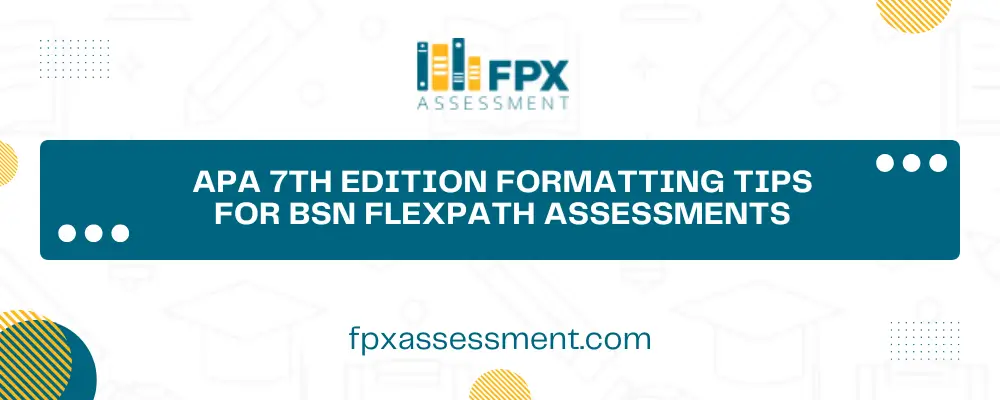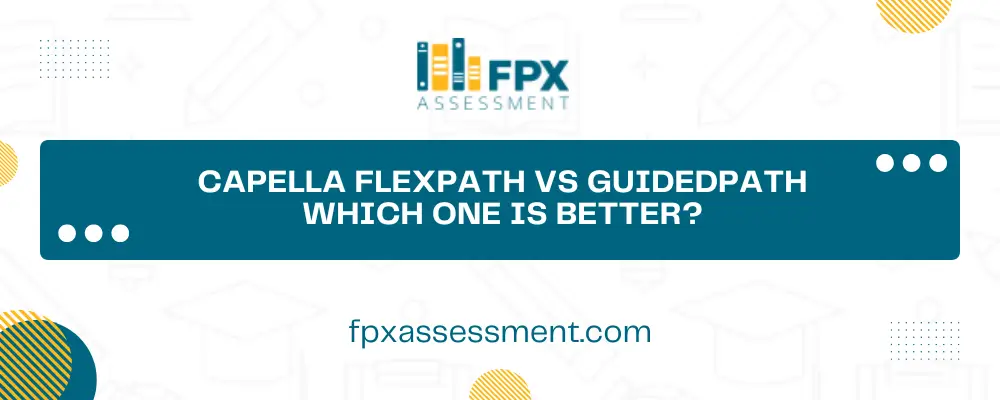APA 7th Edition Formatting Tips for BSN FlexPath Assessments
APA 7th Edition Formatting Tips for BSN FlexPath Assessments APA formatting is a writing style created by the American Psychological Association to bring clarity, order, and professionalism to academic papers. For Capella University’s BSN FlexPath students, mastering the 7th edition of APA is essential for success in assessments and academic writing. It helps you present your ideas clearly, cite sources properly, and maintain consistency throughout your work. In this blog, we’ll cover the most important APA formatting tips for BSN FlexPath learners. This includes how to format your title page and set up citations and references. In addition, use correct fonts and spacing and avoid common mistakes. This makes sure your papers always meet Capella’s academic standards. Why the 7th Edition of APA is Important Adds Structure and Trustworthiness When you use APA style, your work looks neat and professional. It shows that you value honesty in your studies. It also helps your teacher understand your ideas clearly. For Capella FlexPath students, formatting is more than just appearance. It shows that you can think and write like a scholar. Using the same font, spacing, and citation style in all your papers makes your work easy to read. This can help you get better grades and feedback. Supports Proof-Based Nursing Nurses often use evidence-based practice and peer-reviewed research in their assessments. APA 7 helps you cite this evidence correctly. This keeps your arguments clear and prevents you from copying someone else’s work. When you clearly cite your sources, it makes your research findings and clinical decisions seem more trustworthy. For BSN students, using APA correctly shows that they are professionals and value the work of other scholars. How to Set Up a Basic Page Margins, Spacing, and Font Set up your page correctly before you start writing. APA 7 says that all sides of your document must have 1-inch margins. You can use any font that is easy to read and stays the same throughout the paper. Some good choices are Times New Roman (12 pt), Calibri (11 pt), and Arial (11 pt). There shouldn’t be any extra spaces between paragraphs. The title page, body text, and reference list should all be double-spaced. Indent the first line of each new paragraph by half an inch. These little things may not seem like much, but they make your paper look neat and professional, which is very important in nursing school. Title Page for Student Papers What to Include and How to Set it Up The title page is the first thing your reader sees. Make sure to follow APA’s student paper rules. Add your full name, Capella University, and the course number and title. Also, mention your teacher’s name and the due date. Start page numbers in the top right corner of the title page. Most Capella courses don’t need a running head, but your teacher might ask for one. Use a short and clear title so readers can quickly understand what your paper is about. Organizing with Headings, Levels, and Structure Headings help you organize your assessment and make it easier for people to understand what you mean. There are five levels of headings in APA 7, but most BSN FlexPath papers only use the first three. Level 1 headings are written in title case, bold, and centered. Level 2 headings are bold and line up to the left. Level 3 headings are bold, italicized, and lined up on the left. If you use headings correctly, they can make a long paper easy to read and understand. You could use headings like “Introduction,” “Evidence Review,” “Nursing Implications,” and “Conclusion” to help your reader follow along with your paper. References in the Text How to Properly Give Credit to Sources It’s very important to give credit to your sources in every Capella BSN assessment. APA 7 style uses two types of citations: parenthetical and narrative. In a parenthetical citation, both the author’s name and the year go inside parentheses, like this: (Smith, 2023). In a narrative citation, the author’s name appears in the sentence, such as Smith (2023) found that…, and the year is in parentheses. This citation system helps keep your nursing papers reliable and professional. Reference List Formatting the Reference Page At the top of a new page for your reference list, the word “References” should be bolded and centered. Each entry has a 0.5-inch hanging indent. Sort the sources by the last name of the first author in alphabetical order. Use APA’s templates for books, journal articles, and websites, and check that things like italics, capitalization, and punctuation are all right. Readers who want to check your evidence will be able to find it easily if you properly cite your sources. Setting up Capella FlexPath Use the Templates and the Rubric Each Capella BSN FlexPath test has its own way of grading, and sometimes its own rules for how to set up or name the test. Always look at the rubric before you hand in your paper. Follow the template that Capella gives you. It is already set up to meet all of the school’s needs and is formatted according to APA 7 rules. Not only does turning in work on time and formatting it correctly show professionalism, but it also lowers the chance that you will need to make changes. Final Checklist Before you submit your BSN FlexPath assessment, take a few minutes to read over your paper. Make sure that your title page is in the APA student format, the page numbers are correct, and all of your citations are in your reference list. Moreover, make sure that the paper is double-spaced and uses the same font throughout. Also, make sure your headings are set up right and that your references are in alphabetical order with hanging indents. Conclusion Students in nursing school need to know how to use the APA 7 style. It not only helps you get better grades, but it also prepares you to write in a medical setting. Your Capella FlexPath assessments will look neat, trustworthy, and scholarly

